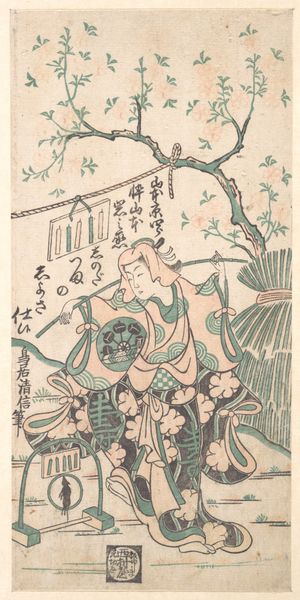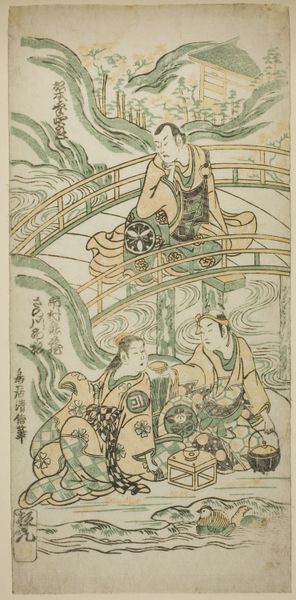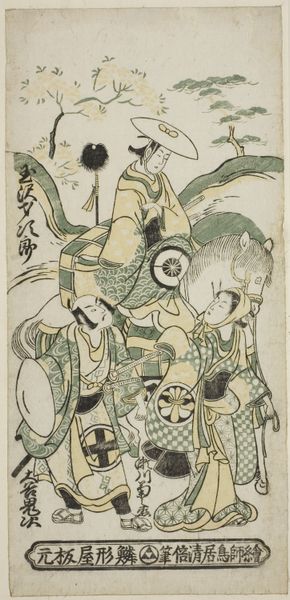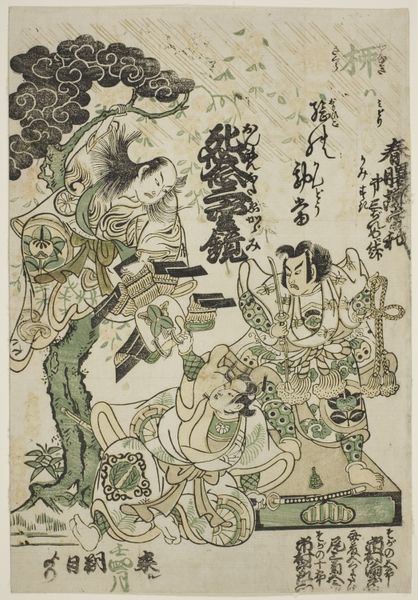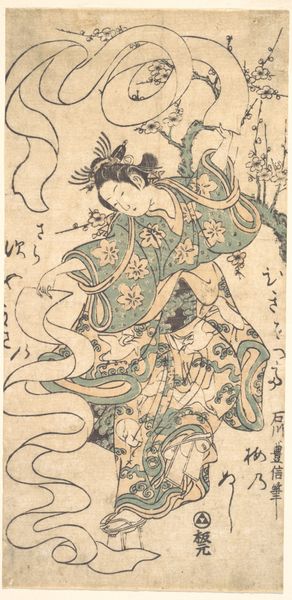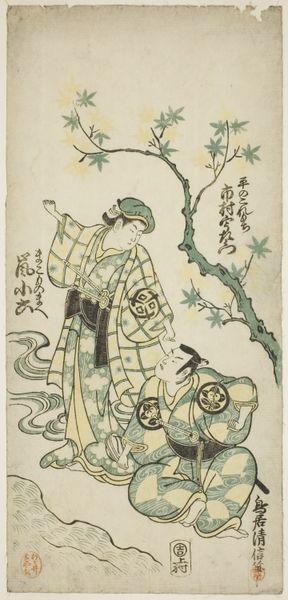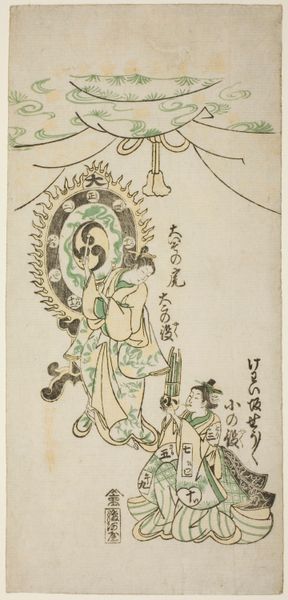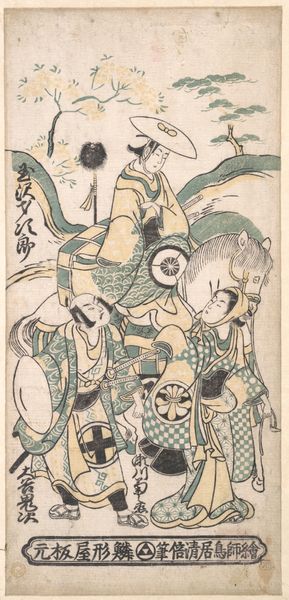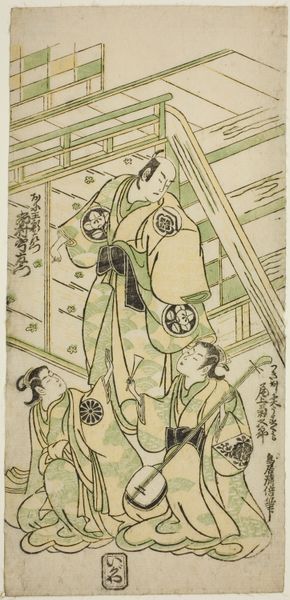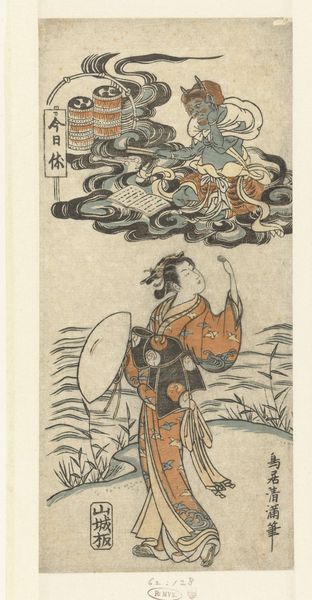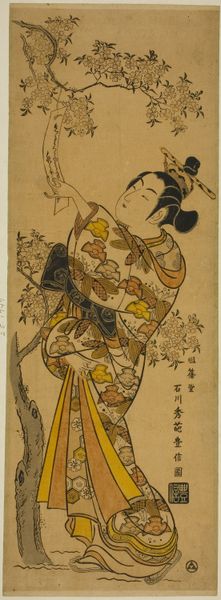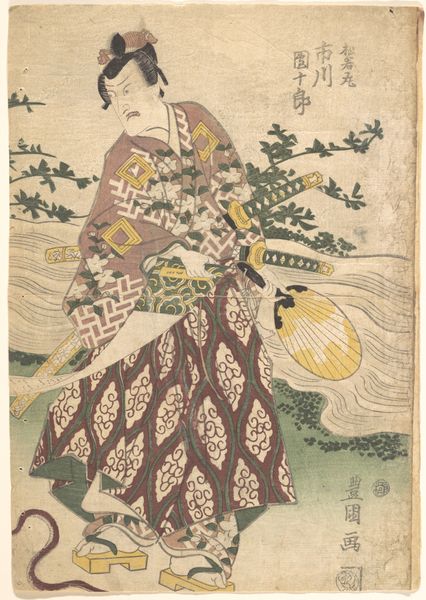
print, woodblock-print
#
narrative-art
# print
#
asian-art
#
ukiyo-e
#
figuration
#
woodblock-print
Dimensions: H. 12 3/8 in. (31.4 cm); W. 5 3/4 in. (14.6 cm)
Copyright: Public Domain
Curator: What an evocative print. It's titled "Ichimura Kamezo and Arashi Tomonosuke" and it's attributed to Torii Kiyomasu I, placing it somewhere between 1738 and 1758. I find myself completely drawn in by the expressive gestures. Editor: It does have a certain charm, even with the flattened perspective. My initial reaction is that it's dreamlike, with those swirling blues and greens dominating the palette. It gives it a melancholic and contemplative quality. Almost as if the scene is submerged. Curator: Yes! Submerged is a great way to put it. Kiyomasu I has captured a moment from a Kabuki play featuring these two actors. Ukiyo-e prints like this were incredibly popular; early examples are often hand-colored but this appears to be from an early stage of woodblock print technology with just two colors. The medium speaks to accessibility—mass-produced art for a wider audience, beyond the elite. Editor: Absolutely. And what does it say about who was considered important enough to depict at this moment in time? Here we have these popular, powerful men depicted in what might seem an otherwise ordinary, or even private, scene. This creates a dialogue around fame, masculinity and what sort of everyday theatrics men have historically been allowed to perform. Curator: The circles on the kimono, emblazoned with emblems, point to status, fame, their identities carefully cultivated for the stage. I almost want to reach out and touch those detailed fabrics. Each line of the kimono pattern adds depth, pulling me into the actors' world. They wear their roles so well. I'd be fascinated to see this on the Kabuki stage today. I wonder if contemporary male icons can exude a comparable stage presence? Editor: It also makes you consider what's not included: The women who must have certainly contributed to the Kabuki tradition, behind the scenes as much as on the stage. And thinking about that audience... what did it mean for a predominantly male and affluent gaze to be fixed on these performers? Curator: Indeed, the omissions often speak as loudly as what's included. This woodblock whispers of the performative nature of identity, the public personas we curate, and those left outside the spotlight's glare. Editor: I'll leave with a consideration of how such prints—seemingly documenting "ordinary" encounters—reveal extraordinary complexities of gender, performance, and visibility that we might otherwise have overlooked. Curator: Absolutely, it all leaves me yearning for the theater, doesn't it? To witness a moment suspended in time, a glimpse into another's performed life, filtered through the lens of art.
Comments
No comments
Be the first to comment and join the conversation on the ultimate creative platform.
